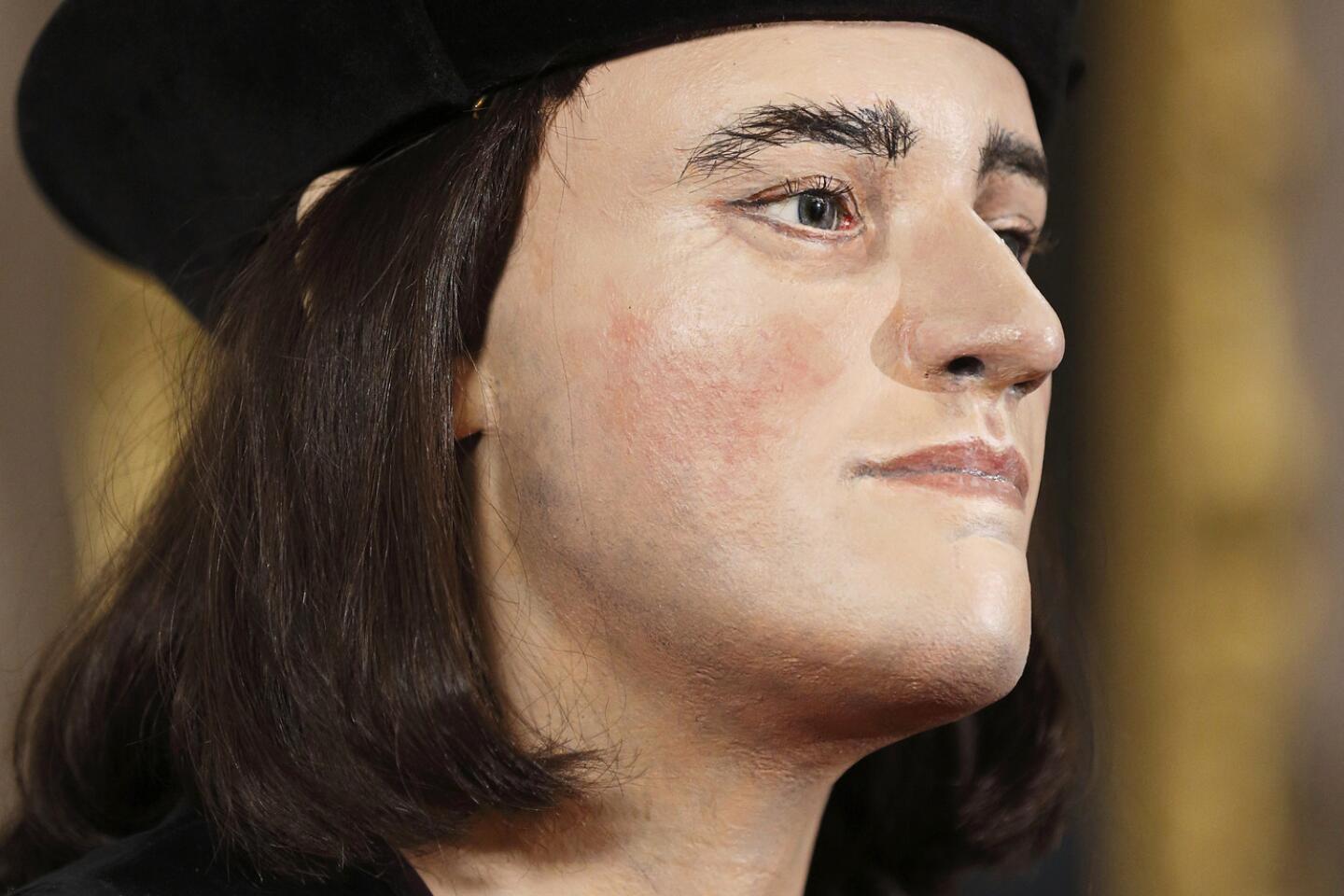King Richard III’s genome to be sequenced: What we might learn
- Share via
The skeleton of the medieval monarch King Richard III will bear just one final indignity before it is laid, once again, to rest.
Researchers at the University of Leicester in England plan to sequence the deceased ruler’s entire genome by collecting some of his bone material, grinding it into a powder, and then extracting the DNA.
But time is running out.
“He will be re-interred soon, so the ability to do this just exists for a short amount of time,” said Turi King, a geneticist at the University of Leicester, who will lead the project.
“He will be the first known individual where we will be able to do his entire genetic sequence,” she added in a statement.
It was almost exactly a year ago that a research team from the University of Leicester announced that the bones they discovered beneath an ordinary parking lot in the town of Leicester did indeed belong to King Richard III.
The evidence they cited included clear signs of scoliosis, which fits the description of the king as having a hunched back and raised right shoulder; carbon dating that placed the bones somewhere between 1455 and 1540 (Richard died in 1485); and a DNA test that compared a bit of the skeleton’s DNA to that of two known descendants. They were a match.
The state of the skeleton when it was found suggested that Richard’s death was particularly unpleasant. The feet were missing -- possibly chopped off -- and the hands were found close together, implying they may have been bound.
The skeleton showed 10 wounds, including two deadly blows to the back of the head, one of which sliced off a piece of the skull.
Now researchers are hoping that sequencing DNA from the skeleton can reveal even more about the monarch. For example, the color of his hair and eyes might be determined. Researchers also might be able to tell whether he was genetically predisposed to scoliosis, and learn more about his relationship to modern human populations.
“The idea is that this will become a resource for people to look at,” said King. “We’re still in the early stages of genetic analysis, we don’t know everything about our genomes, but by making this one public, it is something that people can come back to for decades. He becomes a learning resource for everybody.”
Do you love science? Me too! Follow me on Twitter for more like this.








